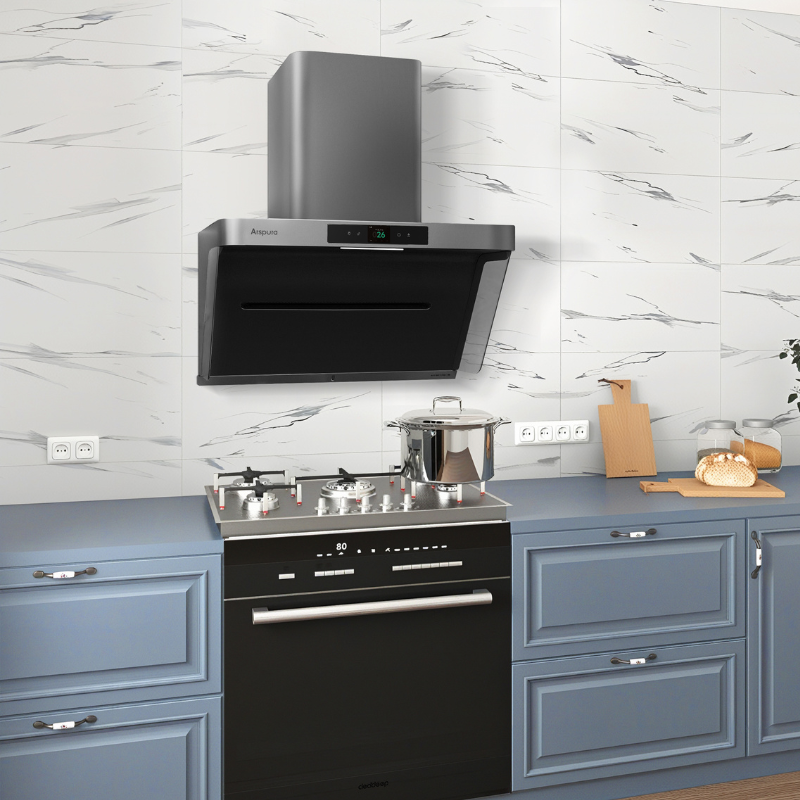A Homeowner's Guide to Kitchen Range Hood Repair

A well-functioning kitchen is the heart of a happy home, and your range hood plays a vital role in keeping it that way. While often overlooked, this essential appliance is responsible for whisking away smoke, odors, and grease, ensuring a clean and healthy cooking environment. So, when your trusty range hood starts to sputter, it can quickly turn your culinary dreams into a smoky nightmare. But don't rush to call for expensive range hood repair just yet! With a little know-how, you can tackle many common issues yourself. This guide will walk you through the troubleshooting process, from simple fixes to knowing when it's time to call in the pros.
Common Range Hood Problems and Their Causes
Before diving into repairs, it's helpful to understand the common culprits behind a malfunctioning range hood. Here are some of the most frequent issues homeowners face:
- The range hood won't turn on. This is one of the most common complaints and can often be traced back to a simple power issue.
- The fan and lights are dead. If both the fan and lights are out of commission, it's a strong indicator of a power supply problem.
- The fan is noisy or vibrating. A rattling or vibrating fan can be caused by a variety of issues, from a loose blade to a worn-out motor.
- The fan isn't clearing smoke effectively. If your kitchen remains hazy even with the fan on high, you're likely dealing with a blockage or a dirty filter.
- The lights are not working. This is often a simple fix, but it can sometimes point to a more complex electrical issue.
By identifying the specific problem, you can narrow down the potential causes and find the right solution for your kitchen range hood repair.
DIY Troubleshooting for Your Range Hood
Now that you have a better idea of what might be wrong, it's time to roll up your sleeves and get to work. These DIY tips can help you solve many common range hood problems without spending a dime on professional repairs.
Check the Power Source
Before you start dismantling your range hood, always start with the simplest solution: checking the power.
Circuit Breaker: Head to your home's electrical panel and check if the circuit breaker connected to the range hood has been tripped. If it has, simply flip it back on.
Outlet Connection: If your range hood is plugged into an outlet, ensure the plug is secure. Also, check if the outlet's GFCI switch has been tripped. You can use a multimeter to verify that the outlet is receiving power.
Fuses: Some older models may have a fuse. If your range hood has one, check to see if it's blown and replace it if necessary.
A surprising number of hood fan repair issues can be resolved with these simple power checks.
Address Fan and Motor Issues
If the power is fine but the fan still isn't working, the problem may lie with the fan motor or switch.
Clean the Fan Blades: Grease and grime can build up on the fan blades, causing them to become unbalanced and noisy. A thorough cleaning can often restore them to proper function.
Test the Fan Switch and Motor: If you're comfortable with basic electrical work, you can use a multimeter to test the fan switch and motor for continuity. If either component fails the test, it will need to be replaced. This is a more advanced kitchen exhaust hood repair, so if you're not confident in your abilities, it's best to call a professional.
Tackle Lighting Problems
If the fan is working but the lights are out, here's what to do:
Replace the Lightbulbs: The most obvious solution is often the right one. Replace the lightbulbs to see if that solves the problem.
Check the Light Switch: If new bulbs don't do the trick, the light switch may be faulty. You can test it with a multimeter to see if it needs to be replaced.
For a more structured approach, refer to the quick troubleshooting chart below.
Quick Troubleshooting Chart
| Failure Phenomenon | Potential Cause | Recommended Solution |
|---|---|---|
| Unit is completely dead (no fan, no lights) | No power to the unit; loose plug. | Confirm the outlet has power and the plug is secure. Check the circuit breaker. |
| Lights work, but the fan doesn't run | Faulty control switch; Burned-out motor; Damaged capacitor. | These issues typically require professional service to replace the faulty component. |
| Fan runs, but lights don't work | Burned-out light-bulbs; Faulty light switch or socket. | Replace the light-bulbs. If that fails, the switch or socket may need professional replacement. |
| Poor suction/ventilation | Range hood installed too high; Strong drafts interfering with airflow. | Consult a professional to adjust installation height; Minimize drafts by closing nearby windows during use. |
| Excessive vibration or rattling | Improper installation; Loose mounting screws; Unbalanced fan blades. | Tighten all mounting screws. If the unit isn't secure, it may need to be re-installed by a professional. Clean fan blades. |
| Unusually loud noise | Damaged or obstructed exhaust duct. | Inspect the exhaust duct for damage or blockages. This may require professional service to repair or reinstall. |
Important Tips:
Replacing electrical components like switches, sockets, or capacitors should be handled by a qualified service professional.
It's recommended to have your range hood professionally serviced and maintained every 12 months to ensure optimal performance and longevity.
If you've gone through the troubleshooting steps and the fault still exists, please contact a service professional for assistance.
The Filter-Free Advantage: A Modern Solution
One of the most common causes of poor ventilation and fan motor strain is a clogged filter. Traditional range hoods rely on filters to trap grease and odors, but these can quickly become saturated, reducing airflow and creating a fire hazard. Cleaning or replacing them is a messy and often-forgotten chore.
This is where modern technology offers a superior solution. Our Arspura product line features a revolutionary filter-free design that eliminates the hassle of filter maintenance altogether. By using advanced centrifugal force to separate grease from the air, the Arspura system ensures consistent, powerful ventilation without the need for regular filter cleaning or replacement. This not only saves you time and effort but also contributes to a cleaner, safer, and more efficient kitchen. For a long-term solution that minimizes the need for kitchen hood repair, a filter-free system is the smart choice.
When to Call a Professional for Range Hood Repair
While many range hood problems can be fixed with a little DIY effort, some jobs are best left to the professionals. Here are a few signs that it's time to call for expert range hood repair:
- You're not comfortable with electrical work. If the problem requires you to work with wiring, it's always safest to call a qualified electrician.
- The problem is with the motor or control board. Replacing these components can be complex and requires specialized knowledge.
- You've tried all the DIY tips and the range hood still isn't working. A professional will have the tools and expertise to diagnose and fix more complex issues.
When in doubt, it's always better to be safe than sorry. A professional can ensure the repair is done correctly and safely, giving you peace of mind.
Maintaining Your Range Hood for Longevity
The key to avoiding future repairs is regular maintenance. Here are a few tips to keep your range hood running smoothly:
- Clean the exterior regularly. Wipe down the exterior of your range hood with a damp cloth to prevent grease buildup.
- Clean the fan blades. As mentioned earlier, keeping the fan blades clean is crucial for optimal performance.
- Check for blockages. Periodically inspect the ductwork for any obstructions that could be hindering airflow.
By following these simple maintenance tips, you can extend the life of your range hood and prevent the need for costly repairs down the road. And if you have Arsprua's filter-free range hood, your maintenance routine will be even simpler!
In conclusion, a little knowledge and a willingness to get your hands dirty can go a long way in keeping your range hood in top condition. By following the tips in this guide, you can tackle many common range hood repair issues yourself, saving you time and money. And when it's time for an upgrade, consider the modern, hassle-free solution of a filter-free range hood.
FAQs About Kitchen Range Hood Repair
How do I know if my range hood needs repair or replacement?
If your hood isn’t removing smoke effectively, makes unusual noises, or the lights and fan stop working, it may need repair. However, if the motor or control board is failing and parts are costly, replacing the unit might be more economical.
What are the most common range hood problems homeowners face?
Typical issues include poor suction, noisy operation, flickering lights, and complete power failure. Most problems stem from dirty filters, blocked ducts, or electrical faults that can often be fixed with basic troubleshooting.
Can I repair a kitchen range hood myself?
Yes, minor issues like cleaning fan blades, replacing bulbs, or checking the circuit breaker can be handled at home. For electrical or motor-related repairs, it’s best to contact a professional to avoid safety risks.
What’s the benefit of a filter-free range hood system?
Filter-free range hoods use centrifugal separation instead of traditional mesh filters, preventing clogging and airflow loss. They deliver consistent suction power, reduce maintenance time, and improve long-term performance and safety.

